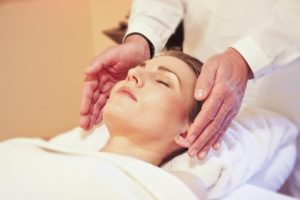Reflexology
Reflexology is a non-intrusive complementary therapy using acupressure to various zones of the feet, hands, and ears which correspond to different parts of the body. It can be effective for pain relief, treating digestive disorders, reduction of stress and tension, asthma, arthritis, the list goes on and on. It is also possible to predict a potential illness and either give preventative therapy or suggest that specialist advice be sought. The massaging effect of reflexology creates a soothing effect that enhances blood flow to the overall benefit of the whole body. Pressure initiates a soothing effect to bring muscular and nervous relief. If applied to a particular point, reflexology may create a sensation elsewhere in the body, indicating a connection or flow between the two points.
So this is the basis of reflexology and although pain can be alleviated immediately, continued treatment over periods of up to one hour can also have beneficial maintenance effects. Reflexology helps the body to restore its balance naturally.
Usually after a treatment tension is reduced and a state of relaxation is achieved. Sleep, mood and sense of well-being are improved.
Reflexology is holistic, it does not compartmentalise the body but enables and encourages the whole body to heal itself.
Reiki
Reiki is when the practitioner gives treatments by placing their hands in a number of positions on the body with the intent to heal. The Reiki energy begins to flow to the area most in need to release the body and muscles of negative and/or stress energies.
Reiki is a very powerful, deep and gentle form of therapy. In its long history of use, starting in Japan, it has been used to treat many types of illness and injury, including:
- multiple sclerosis
- sun burn
- heart disease
- fatigue
- cancer
- insomnia
- skin problems
- impotence
- cuts and bruises
- infertility
- headache
- poor memory
- cold and flu
- mental health problems
- asthma sore throat
- aches and pains
- and much, much more.
It can be beneficial and can work to improve the effectiveness of other types of therapy, including medical treatment, reducing negative side effects, shorten healing time, reduce pain, reduce stress and help create optimism.






